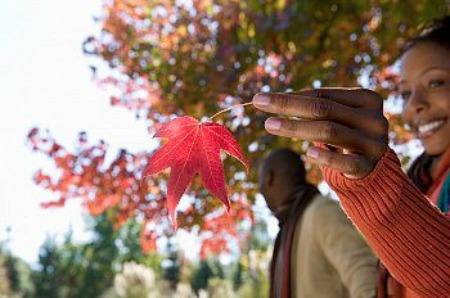
Summer’s over and you may find yourself falling into some serious allergy symptoms. Sneezing? Runny nose? Itchy eyes? Fall allergy triggers are different, but they can cause just as many symptoms as you have in spring and summer.
What Causes Fall Allergies?
Ragweed is the biggest allergy trigger in the fall. Though the yellow-flowering weed usually starts releasing pollen in August, it can last into September and October. About three-quarters of people who are allergic to spring plants are also allergic to ragweed.
Ragweed pollen loves to get around. Even if it doesn’t grow where you live, it can still travel for hundreds of miles on the wind. For some people who are allergic to ragweed, foods like bananas, melon, zucchini, and certain other fruits and vegetables can also cause symptoms.
Mold is another fall trigger. You may think of mold growing in your basement or bathroom – damp areas in the house – but mold spores also love wet spots outside. Piles of damp leaves are ideal breeding grounds for mold.
Don’t forget dust mites. While they are common during the humid summer months, they can get stirred into the air the first time you turn on your heat in the fall. Dust mites can trigger sneezes, wheezes, and runny noses.
Going back to school can also trigger allergies in kids because mold and dust mites are common in schools.
What Are the Symptoms?
Runny nose
Watery eyes
Sneezing
Coughing
Itchy eyes and nose
Dark circles under the eyes
How Are Fall Allergies Diagnosed?
Your doctor or allergist can help find out exactly what’s causing your watery, itchy eyes and runny nose. He’ll talk to you about your medical history and symptoms, and may recommend a skin test.
With a skin test, the doctor places a tiny amount of the allergen on your skin — usually on your back or forearm — and then pricks or scratches the skin underneath. If you’re allergic to it, you’ll get a small, raised bump that itches like a mosquito bite.
Sometimes a blood test may be used to diagnose allergies.
How Can I Treat My Allergies?
There are many medications you can use:
Prescription nasal spray – reduce inflammation in your nose
Antihistamines – help stop sneezing, sniffling, and itching
Decongestants – help clear mucus out of your nose
Antihistamine eye drops
Allergy shots – take longer to work but also reduce symptoms for longer
You can buy some allergy medications without a prescription, but it’s a good idea to talk to your doctor to make sure you choose the right one. Decongestant nasal sprays, for example, should only be used for three days. If you use them longer, you may actually get more congested. And if you have high blood pressure, some allergy drugs may not be right for you.
Tips to Manage Symptoms
Stay indoors with the doors and windows closed when pollen is at its peak (usually in the mornings). Check pollen counts in your area.
Before you turn on your heat for the first time, clean your heating vents and change the filter. Bits of mold and other allergens can get trapped in the vents over the summer and will fill the air as soon as you start the furnace.
Use a HEPA filter in your heating system to remove pollen, mold, and other particles from the air.
Use a humidifier if you need to, to keep your air at between 35% and 50% humidity.
Wear a mask when you rake leaves so you don’t breathe in mold spores.